Outline of Project E02
Search of topological phenomena in correlated open quantum systems based on quantum entanglement
Department of Physics, Kyoto University
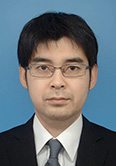
In this decade, topological aspects of condensed matters have extensively studied. In topological phases, such as topological insulators, topologically nontrivial properties induce gapless boundary modes robust against perturbations. In addition to the above significant developments, non-Hermitian systems, such as open quantum systems, attract much interest recently. For such systems, a variety of novel phenomena (e.g., the emergence of exceptional points and the non-Hermitian skin effect) are reported due to the interplay between the non-Hermiticity and the topology. In my project, I address analysis of topological open quantum systems in terms of extreme universe.
In particular, recent developments of technology allow us to experimentally tune dissipation and correlations for cold atoms. In these systems, interplay between strong correlations and non-Hermitian topology would trigger off novel phenomena unique to strongly correlated open quantum systems. I particularly analyze these open quantum systems in search of exotic non-Hermitian topological phenomena. Furthermore, I address theoretical proposals how to experimentally observe such novel phenomena for cold atoms.
By communicating other researcher of extreme universe, I also address the above project from the interdisciplinary viewpoint.
An approach to quantum gravity from quantum information theory and condensed matter theory
Institute for Solid State Physics, the University of Tokyo

General relativity and quantum mechanics are the most important developments in physics in the 20th century. However, quantum gravity, which is the combination of relativity and quantum mechanics, is still not fully understood yet. In this research, we study quantum gravity from the perspective of quantum information and condensed matter physics. Through that, we study how quantum mechanics and general relativity are combined and how spacetime emerges from quantum mechanical systems. Furthermore, we study the implication of quantum gravity on low energy effective theory through the lens of quantum information and condensed matter theory. Based on that, we study how quantum gravity gives predictions for our spacetime and universe as well as elementary particles. We also analyze the quantum information structure in condensed matter and quantum phases out of equilibrium and apply these results to problems in quantum gravity.
More specifically, we study 「[A]application of quantum channels and open quantum systems to quantum gravity」, 「[B]Quantum information and the Swampland program」, 「[C]Quantum information aspects of emergence and phases in condensed matter systems」.
In [A], we study open dynamics in the SYK model and then generalize to the top-down AdS/CFT. Based on those, we understand the emergence of time and the dual of non-unitary theories, which are not well understood. In [B], we aim to understand the swampland program in the language of quantum information theory. Beyond the black hole thermodynamics, we derive the swampland conditions by quantum information approach and quantum entanglement, which are more basic properties in quantum gravity. In [C], we study quantum information structures in emergent gauge fields from condensed matter (spin systems) like Lifsihtz gravity, fracton topological order. Emergent gauge fields are ubiquitous in condensed matter systems. Since gravity is also a gauge field, they are similar in that sense. Through the understanding of quantum information properties in the system with emergent gauge fields, we try to understand quantum gravity.
Application of tensor networks to elementary particle physics
College of Science and Engineering, Kanazawa University
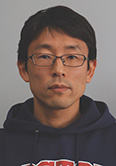
Tensor network (TN) method was originally proposed as a variational method to solve quantum many-body system in the condensed matter physics. At present, various improvements have been made on the method, and its applications have spread to many fields such as elementary particle physics, quantum information, and quantum chemistry. I am particularly interested in applying the TN method to quantum field theory, which is a theoretical foundation of elementary particle physics. My final goal is to obtain the dynamics of the theory, which are difficult to capture with the Monte Carlo method due to the sign problem, from first principle computation using the TN method. Interesting physical systems inherent the sign problem include QCD with finite baryon density, real-time path integral, lattice chiral gauge theory, lattice SUSY, and system having a topological theta term. Currently I am working on revealing a phase structure of CP(1) model with the topological term, which is known as a toy-model of QCD. Although it is expected that the knowledge of QCD can be obtained by analyzing the model, at present the phase structure of CP(1) itself is under debate. Thus, I would like to draw a final conclusion by using a more sophisticated TN method.
While the TN method has no sign problem, it still has a problem of drastic increase in computational cost when applied to higher dimensional system. A key to solve the problem is how to compress the information of tensor. Various ideas have been proposed so far, such as incorporating environment effects and local correlations, or a stochastic method. In this project, I aim to develop a highly efficient coarse-graining algorithm for high dimensional system by interweaving such knowledge.
Study of emergence of spacetime in tensor network based on the renormalization group
Department of Physics, Shizuoka University

The emergence of space-time is considered to be an essential feature of quantum gravity. It has been recognized that quantum entanglement plays a crucial role there. The gauge/gravity correspondence is a typical example in which the emergence of space-time is realized. The purpose of this project is to make progress in the construction of quantum gravity by studying continuum tensor networks based on the renormalization group in the gauge/gravity correspondence.
Tensor networks models such as the MERA, the HaPPY code and the random tensor network are important in the studies of the emergence of space-time, since the models give networks that can be interpreted as discrete spaces emerging from boundary theories through entanglement entropy. Here it is needed to construct continuum tensor network models to obtain the emergence of continuum space.
The cMERA, a continuum analog of the MERA, is constructed in free field theories by using the variational method, while the variational method seems difficult to apply to interacting theories. Since the layers in the network of the MERA can be interpreted as the scale of renormalization group, which corresponds to the bulk direction, constructing the cMERA is considered to be equivalent to obtaining the scale dependence of wave functionals. In this project, we study the construction of continuum tensor networks based on renormalization group. In particular, we focus on the exact renormalization group and the tensor renormalization group, which can be viewed as a path-integral formulation of the MERA.
We construct the exact renormalization group for wave functionals in quantum scalar field theories, which enables nonperturbative analyses of the wave functionals. We also develop a numerical method to examine the scale dependence of the wave functionals by taking the continuum limit of the tensor renormalization group for lattice field theories. We construct the continuum tensor networks by using these methods and extract the dynamics of gravity from the networks to study the emergence of space through quantum entanglement.
Quantum entanglement and information scrambling in inflationary models
Department of Physics, Naogya University
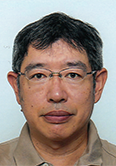
Stochastic approach of inflation treats the quantum inflaton field as a classical stochastic variable. The basic equation of this approach is the Langevin equation for the long wavelength modes of the inflaton field with the stochastic noise from the short wavelength inflaton fluctuations. Hence the evolution of the inflation field has the similar behavior as a Brownian particle. This approach can effectively include large-scale non-linear quantum fluctuations and its validity is discussed from the IR structure of quantum fluctuations in de Sitter spacetime.
Based on the stochastic picture of inflation, there appears the eternal phase in which inflation never terminates due to quantum fluctuations. The realization of the eternal phase depends on parameters of the inflaton potential, and in the eternal phase, the global structure of inflationary spacetime becomes inhomogeneous and very complicated.
Although the stochastic approach of inflation includes quantum effect as the short wavelength random noise, it does not take into account of quantum entanglement, which is a key property of quantum systems. The purpose of this research project is to investigate effect of quantum entanglement on the stochastic picture of inflation. For this purpose, we will employ a qubit model of inflation with quantum entanglement and investigate evolution of entanglement structure of this model. We will also investigate “information” of this model to understand emergence of “classical property” in the stochastic inflation.
Study of quantum theory of gravity based on the Jackiw-Teitelboim gravity theory
Graduate School of Science and Engineering,
Saitama University
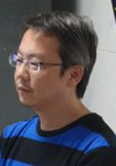
My main research area is superstring theory in elementary particle theory. Superstring theory is considered to be a leading candidate for the ultimate theory that can uniformly describe the four forces that exist in nature: electromagnetic force, weak force, strong force, and gravity. There are various research themes in string theory research, but I am interested in the duality (equivalence) between gauge theory and gravity (string) theory. This duality is realized by the gravitational (string) theory on the Anti-de Sitter (AdS) space and the field theory with conformal symmetry (Conformal Field Theory, CFT) equivalence. This duality was originally proposed by Maldacena. This equivalence is one of the realization examples of the holographic principle, but the basic mechanism of how this principle is realized has not yet been elucidated.
For this mechanism, I have applied mathematical and physical analysis based on the integrable structure that exists behind the duality, chaotic motion and turbulent behavior of strings, and chaotic scattering in gauge theory. We are conducting research from this perspective. It is a very important research topic to understand the relationship between quantum information theory, which is the subject of this research area, and these themes.
The subject of my publicly offered research is to analyze the Jackiw-Teitelboim gravity, a toy model in which dilaton is coupled to two-dimensional gravity, in order to clarify quantum information theory and the holographic principle. There are various choices for the dilaton potential, and our previous research has shown that the sinh-type potential leads to the well-known Liouville gravity. By promoting this research, I would like to explore the relationship with quantum information theory and the clues to clarify the fundamental degrees of freedom in quantum gravity.
Theoretical modeling of optomechanical pendulum for testing quantumness of gravity
Department of Physics, Kyushu University

My research focuses on themes related to the verification of the quantum mechanical properties of gravity. This theme, which revisits the question of whether the gravity follows the framework of quantum mechanics or not, has a long history of deep consideration by Feynman and Penrose, and is a very interesting theme that is related to recent developments in quantum information and quantum technology. Quantum entanglement caused by gravitational interaction is one of the main interests, and I am also conducting theoretical research to clarify its significance for quantum gravity theory and whether it can be verified experimentally. We focus on how a quantum mechanical system interacts through gravity, but since gravity is very weak, it is necessary to realize the quantum state of a macroscopic object. Optomechanical systems play an important role in realizing the quantum states of such macroscopic objects. An optomechanical system is a mechanical system with one end of an optical cavity as a mirror oscillator that interacts with the cavity light. The Michelson interferometer, which combines them, is used in gravitational wave detection, and related research and technology are developing. In the proposal of my research, we are constructing a theoretical model of an optomechanical system with a suspended mirror oscillator called a beam model for the purpose of realizing the quantum state of macroscopic objects and verifying the quantum mechanical properties of gravity in the future. Based on the beam model, we plan to make theoretical predictions of the noise and dissipation to characterize optomechanical mirror oscillators, and of the quantum state when quantum control is performed by feedback control with continuous measurement.
Mesoscopic picture of black holes from quantum information
Department of Physics, College of Humanities and Sciences,
Nihon University
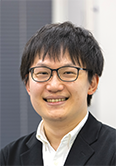
The goal of this publicly offered research is to understand the quantum (microscopic) aspects of black holes and wormholes in terms of holographic principles and quantum information theory.
Black holes have been playing a crucial role to understand the quantum aspects of gravity. In particular, the recent discovery of microscopic wormholes (so-called replica wormholes) associated with black holes has made significant progress toward solving the famous black hole information loss puzzle. This progress is mainly based on the semi-classical (macroscopic) picture, while the quantum (microscopic) picture is still unclear and problematic.
I am now studying “What microscopic properties of the wormholes play an important role?” and “Is there any way to complement the relationship between the micro and macroscopic pictures of wormholes?”. These questions are directly related to the research of Group B.
More specifically, my current research plans are to (1) clarify the microscopic and macroscopic properties of candidate quantum states that describe the microstructure of wormholes in terms of quantum information theoretic quantities and (2) study the quantum operations that “decompose” macroscopic wormholes into microscopic ones and their effects on the wormhole geometries. Interestingly, these topics are closely related to the research of Group C and D, so I am very excited to join this Extreme Universe collaboration which will lead to new research directions. I am also interested in studying “(3) implications of such microscopic wormholes to physics such as symmetries”.
Entanglement Witness in Quantum Frustrated Magnets
Okinawa Institute of Science and Technology Graduate University

Quantum entanglement has attracted a great deal of attention in recent years. In particular, theoretical studies using entanglement entropy (EE) have revealed that quantum entanglement is important for understanding unique and exotic states in quantum systems, such as quantum spin liquids and topological order. In addition, the concept of quantum entanglement has been shown to be intrinsically important for the development of new numerical methods, such as tensor network methods. On the other hand, it is known that it is challenging to measure EE directly experimentally, except for a small number of systems such as cold atoms or optical systems. Our study focuses on so-called entanglement witnesses (EWs) such as one tangle, concurrence, and quantum Fisher information. These can be written in terms of spin-spin correlation functions and dynamical spin structure factors, which are familiar in the field of magnetism, and are known to be accessible with some experimental techniques such as neutron scattering experiments [1-4]. We focus on quantum states such as quantum spin liquid states and random singlet states, which do not exhibit magnetic orders even at very low temperatures, and for which positive experimental evidence characterizing them is difficult to obtain. Our main purpose of this study is to clarify numerically whether the above EWs can characterize these unique quantum states. We also aim to establish theoretical guidelines that will lead to experimental detection and control methods of the exotic quantum states in candidate materials.
[1] L. Amico et al, Phys. Rev. A 69, 022304 (2004).
[2] W. K. Wootters, Phys. Rev. Lett. 80, 2245 (1998).
[3] P. Hauke et al, Nat. Phys. 12, 778 (2016).
[4] P. Laurell, et al, Phys. Rev. Lett. 127, 037201 (2021).
Study of novel quantum many-body phenomena originating from non-ergodicity in isolated quantum systems
Department of Physics, Tokyo University of Science
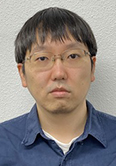
In this publicly offered research, I will study nonergodicity in isolated quantum systems.
The issue of thermalization in isolated quantum many-body systems has become a realistic problem thanks to the developments of various quantum simulators such as cold atoms or molecules in optical lattices, Rydberg atoms in optical tweezers, trapped ions, and superconducting qubits. According to previous studies, if a system satisfies the eigenstate thermalization hypothesis (ETH), the system will thermalize after a long-time evolution. However, to prove the ETH is an unsolved problem. It is also known that some systems do not satisfy the ETH. These systems are called nonergodic systems. Typical examples of nonergodic systems are quantum integrable systems, Anderson localized systems, and many-body localized systems. Recently, quantum many-body scarred systems and Hilbert space fragmented systems have been found as novel ergodicity-broken systems. Inspired by these findings, I will explore novel quantum-many-body phenomena originating from the nonergodicity in isolated quantum systems. In particular, I will study the Hilbert space fragmentation in momentum space, which is different from the previous works. If the Hilbert space fragmentation occurs in the momentum space, we can naively expect that persistent-current states emerge. I will study the nature of the persistent current induced by the Hilbert space fragmentation in momentum space. I also would like to find novel nonequilibrium quantum many-body phenomena and discover a new nonergodic mechanism. In addition to this research, I plan to develop and propose schemes for the experimental implementation of my results obtained in this project.
Theoretical research on methods to measure quantum natures of evaporating primordial black holes by using future observations
IPNS, KEK

Inflation, which is believed to have occurred in the early universe, created quantum curvature (density) perturbations with a magnitude of approximately one part per hundred thousand on a large scale. At the same time, it also produces the cosmic gravitational wave background radiation. As temperature fluctuations caused by curvature perturbations were discovered by previous CMB observations, it is expected to observe B-mode polarization caused by gravitational waves in the future to verify inflation. Recently, the NANOGrav Collaboration reported the possibility of observing gravitational waves that have existed since the beginning of the universe: the NANOGrav experiment has observed significant modulation of radio waves in the nanohertz band over a 12.5 year period by correlating the signals of periodically emitted radio waves by multiple pulsars. If background gravitational waves exist, they stretch and contract space-time, thus modifying the periodicity of the radio waves of those precise pulsars. The observed value was more than seven orders of magnitude larger than the gravitational waves directly created by inflation in the early universe. On the other hand, if the observationally allowed curvature (density) fluctuations δ on small scales produced by inflation can be large (e.g.,δ~0.3. Then, it is possible that an extremely large number of gravitational waves are produced on small scales through second-order nonlinear effects. In our paper (Kohri and Terada, arXiv:2009.11853), we pointed out that this second-order gravitational wave background radiation can explain the observations. Furthermore, the above large density fluctuations are expected to collapse in the early universe to form a black hole of solar mass. This black hole is called a primordial black hole (PBH) to distinguish it from the one of astronomical origin. In fact, gravitational waves are also used as a method to verify this model. These PBHs formed a binary star in the early universe and are now merging. The LIGO-Virgo-Indigo-KAGRA collaboration may find the gravitational waves emitted at that time near future. Thus, the future gravitational wave experiments will soon be used to verify inflation in the early universe and discover PBHs.

